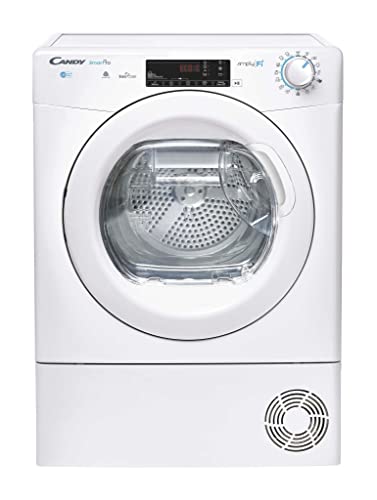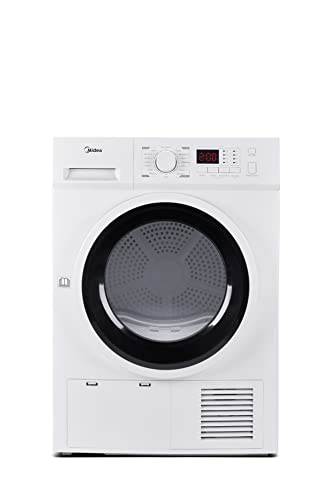How to Properly Use a Heatpump Dryer
 Contrary to conventional dryers that use hot air to dry clothes, heat pump dryers use electricity to transfer water from the fabric and into its compressor. The moisture is then dehumidified, and reheated in the cycle, producing a low-temperature drying process.
Contrary to conventional dryers that use hot air to dry clothes, heat pump dryers use electricity to transfer water from the fabric and into its compressor. The moisture is then dehumidified, and reheated in the cycle, producing a low-temperature drying process.
ENERGY STAR offers several heat pump dryers that have a 4-cubic-foot capacity, which is smaller than the standard American standard sized models (which typically have a capacity of 7 cubic feet). The smaller sizes are less bulky and may be eligible for rebates in some states.
Energy Efficiency
A heatpump dryer is known for its energy efficiency. It utilizes the energy of ambient air to dry clothes and it doesn’t create the waste heat or exhaust like traditional dryers do. They can save homeowners up $600 on energy costs during the lifetime of the appliance. They also have a lower environmental impact than traditional dryers, due to their use of renewable resources.
The energy efficiency of heatpump dryers can be measured by the COP (coefficient-of-performance) which is the ratio between the cooling capacity and the power consumption. The higher the COP is, the more efficient the heat pump is. This is the reason why heatpump dryers have a much lower kilowatt per hour consumption than regular dryers.
The low temperature of the heat pump dryer reduces the drying time as well as the energy consumption. This is because the system’s dehumidification capability is increased. Jia et al. (1993) examined the combination heat pump and Heatpump Dryer microwave dryer using a thermosyphon loop for low temperature grain. They discovered that it used less than 2.1 J per kilogram of water removed.
The use of heat pumps can be utilized in conjunction with other drying methods to increase energy efficiency. For instance atmospheric freeze drying can be combined with a heat source to create a method that is less expensive than vacuum freeze drying, and provides products similar to those created by vacuum freeze drying (Bantle and others. 2009).
Many rebate programs offer incentives to purchase dryers with heatpump, even though the initial cost may be higher. For example, the IRA’s Energy Star program provides rebates to homeowners who have cut their whole-home energy usage by 35 percent or more. This makes the initial expense of dryers with heatpump more affordable for families on a limited budget.
If you’re seeking the highest efficiency in energy use, a heatpump dryer is a good option. It is estimated that the heatpump dryer can reduce energy consumption by over 40% when compared with traditional dryers which makes it one of the most efficient methods of drying clothes at home.
Convenience
Although dryers with heat pump tumble dryer reviews pumps are fairly new to the United States, they’re gaining popularity due to their energy efficiency and climate advantages. They’re also gentler on clothing because they use lower temperatures to dry them, and moisture sensors prevent overheating. These features reduce shrinkage and damage, which makes them more cost-effective than traditional dryers that use electricity.
The closed-loop system heat pump dryers use to capture moisture and reuse air is what sets them apart from conventional models. Instead of heating the air before dumping it into the air via exhaust vents heat pump dryers make use of compressors and refrigerants to recycle the air and collect excess humidity.
This is similar to a refrigerator reversed: the compressor heats the air and transfers it into a cold evaporator coil where the water vapor condenses in the pan. The dry air is recirculated back into the drum, and the excess moisture goes into the drain pan. The hose for condensation drains to the sewer line of your home which eliminates the need for an exhaust vent in the majority of cases.
Heat pump dryers reduce energy costs and are quieter. Some models even have sound-dampening technologies for added convenience. They are also simpler to maintain than traditional dryers. Since they don’t require vents to work they’re equipped with fewer parts and less risk of breaking. They don’t need gas lines, as do vented dryers. This can be expensive to replace or fix.
They are more expensive than traditional dryers however, they tend to dry slower. This is because they operate at lower temperature settings and might require several times to get the laundry completely dry. However, this is often compensated for by reducing electricity usage and incorporating energy-efficient modes to make up for this delay.
The Miele T1 heat-pump dryer for instance, could save up to 60% of energy consumption and is quieter thanks to the vibration reduction system. It also comes with smart features such as EcoDry or PerfectDry that analyzes the calcium content in your water to ensure a consistent and safe drying. The dryer is WiFI-compatible and can be controlled remotely with an app for smartphones.
Easy Installation
A heat pump dryer utilizes an air compressor that transfers heat from the air to the laundry. It can be installed anywhere as it doesn’t need a vent. That makes it a good option for small homes and accessory dwelling units (e.g. an apartment over the garage) and even additions. You can stack a heating dryer and washer to make space.
The main disadvantage of this type of dryer is that it takes longer to dry an item than traditional vented dryers. It’s less energy-intensive and it doesn’t produce any smells. It also helps you reduce the amount of clothes you wash, and keep your clothes fresher longer.
The majority of brands of heat pump dryers are sold in compact sizes, making them easy to install in small spaces and homes. If you’re looking for a more spacious model, look for an ENERGY STAR certified heat pump dryer that has an extra-large drum. These dryers are equipped with an infrared heating element which accelerates the drying process.
The first step in putting in a heat pump dryer is to prepare the space where you’ll be placing it. This involves removing any clutter and securing the area around the dryer to ensure adequate airflow. Then, you must prepare the power outlet, making sure that it is only for this appliance. Check that the amperage and voltage are in line with the specifications of the user’s manual. Connect the dryer to the power outlet and test it out by running a short test. Clean the lint filter following each use and regularly check and clean the exhaust hose in order to prevent clogging and maintain performance.
To get the most out of your dryer’s heat-pump adhere to the instructions of the manufacturer for load size and temperature. By doing this, you will enable the dryer to function efficiently and minimize excess energy use. To ensure that everything is operating properly, it’s important to plan an annual maintenance appointment with a certified technician. They can also examine your ductwork for obstructions or damage that may be affecting efficiency.
Maintenance
Heating pump dryers can be a useful addition to your home when properly used. They do require regular checks as well as cleaning and maintenance to keep them functioning optimally and efficiently throughout the year. By following these guidelines and incorporating them into your regular routine can help prolong the life of your dryer as well as reduce the amount of energy used, allowing you to save money.
One of the most important maintenance requirements is to keep the condenser drain and the lint filter free of blockages. The lint filter needs to be cleaned and removed each time you use it to avoid the clogging that can result in reduced performance and energy efficiency. You should also check regularly the vent hose to ensure it is free from blockages or kinks. A blocked vent can result in increased drying times and is a significant fire risk. You should detach and clean the vent hose frequently by using a dryer lint remover or a vacuum cleaner attachment to ensure it is thoroughly cleaned, removing any trace of lint or debris.
It is also important to maintain the heat exchanger’s cleanliness regularly. This part transfers heat to clothes from the air and can become clogged over time with lint, resulting in a decrease in efficiency and shorter cycles. You can refer to the dryer’s user manual to find specific instructions on how to clean and access the heat exchanger. After cleaning the heat exchanger, be sure to rinse and dry it thoroughly before installing it back into your dryer.
Also, ensure that the dryer is placed in a well-ventilated area and away from walls or other obstructions. This will ensure that there is enough airflow around the dryer, which ensures proper operation and helps to prevent overheating.
It is also important to clean the exterior and drum of your dryer regularly. This will help to avoid stains and also keep the inside of the dryer free of dirt dust and dirt. You can apply a damp cloth or mild detergent to clean the surface of the dryer and avoid using abrasive cleaners that may damage the surface.
In addition to these maintenance tips it is recommended you seek professional maintenance and service for your heat pump dryer at least once per year. A professional can assess and clean your dryer’s inner components, ensuring that all components are in good condition.